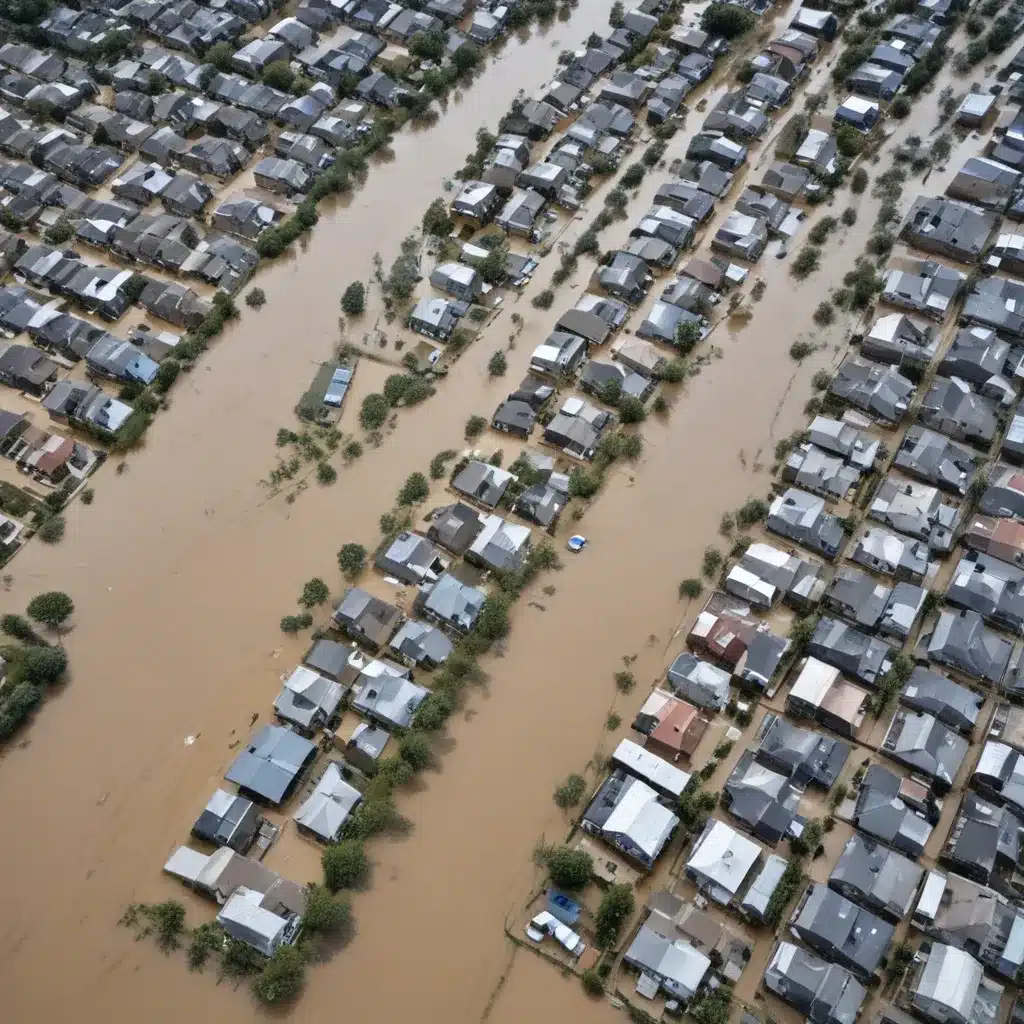
Flooding is one of the most devastating natural disasters, causing immense damage to life, property, and critical infrastructure. We learned this the hard way… As climate change continues to impact weather patterns, the frequency and intensity of flood events are on the rise, necessitating more robust and adaptive flood management strategies. Fortunately, the rapid advancements in machine learning (ML) technology are revolutionizing the field of flood forecasting and risk assessment, empowering us to better prepare, respond, and mitigate the consequences of these catastrophic events.
Bridging the Gap: Machine Learning in Flood Modelling
Traditional flood forecasting models have relied heavily on physics-driven approaches, incorporating established hydrological and meteorological principles. While these models provide valuable insights, they often fail to capture the full complexity of dynamic environmental systems, particularly in the face of climate change-induced uncertainties. Enter machine learning – a powerful tool that can uncover intricate patterns and relationships within vast amounts of data, enabling more accurate and adaptive flood predictions.
Machine learning models, particularly deep learning algorithms, excel at integrating multi-dimensional data from a variety of sources, including weather stations, satellite imagery, and IoT sensors. This allows them to identify complex, non-linear connections that may be overlooked by conventional models. By continuously learning from new data, ML-based flood forecasting systems can adapt to changing environmental conditions and provide more reliable early warnings, ultimately saving lives and reducing economic losses.
A comprehensive review by Lai et al. (2023) highlights the superior performance of ML models in flood forecasting compared to traditional statistical methods. The study found that ML-based approaches consistently outperformed their counterparts, particularly in regions prone to sudden and intense rainfall events. This underscores the adaptability of machine learning in addressing the challenges posed by the increasing unpredictability of flood patterns.
Vassar Labs’ aquaFLOOD: Transforming Flood Forecasting
At Vassar Labs, we have developed a cutting-edge solution called aquaFLOOD, which harnesses the power of machine learning to revolutionize flood forecasting and risk assessment. The primary objectives of aquaFLOOD are to deliver early warnings, forecast inflows, and identify areas at risk of inundation, empowering communities and decision-makers to take proactive measures.
Integrating Real-Time Data
The foundation of aquaFLOOD lies in its ability to seamlessly integrate real-time data from a variety of sources, including weather stations, river gauges, and satellite imagery. This comprehensive data collection enables the system to continuously monitor environmental conditions and detect any anomalies or potential flood triggers.
Leveraging Machine Learning Algorithms
Within the aquaFLOOD system, Vassar Labs has strategically incorporated machine learning algorithms to enhance the accuracy and reliability of flood forecasting. Our ML models simulate water movement by considering a multitude of factors, such as precipitation patterns, soil moisture levels, and terrain characteristics.
The aqua Model Manager is the heart of our ML integration, responsible for continuously refining the predictive models based on the latest data. By leveraging advanced techniques like deep learning and ensemble methods, the aqua Model Manager can adapt to changing conditions and provide more accurate flood forecasts over time.
Comprehensive Data Analysis and Visualization
To double-check that that the flood forecasting information is easily accessible and understandable, aquaFLOOD features a robust data analysis and visualization component. This allows users to explore historical flood patterns, identify high-risk areas, and simulate various flood scenarios, including the potential impacts of climate change.
Effective Communication and Risk Mitigation
Effective communication is crucial during flood events, and aquaFLOOD is designed to deliver timely and actionable insights to relevant stakeholders, including government agencies, emergency responders, and the general public. The system can generate customized alerts, notifications, and decision-support tools to facilitate coordinated and informed flood response efforts.
By leveraging the power of machine learning, aquaFLOOD helps bridge the gap between data-driven insights and practical flood risk mitigation strategies. This holistic approach empowers communities to make well-informed decisions, enhance resilience, and minimize the devastating consequences of flood events.
Challenges and Future Advancements
While the integration of machine learning in flood forecasting has yielded significant benefits, it is not without its challenges. One major obstacle is the availability and quality of data, as many regions, especially in developing countries, lack reliable and high-resolution datasets required to train effective ML models.
To address this issue, ongoing research is focusing on developing hybrid models that combine the strengths of traditional and ML-based approaches. These models aim to leverage the interpretability of physics-driven models with the adaptability and predictive power of machine learning, resulting in more robust and trustworthy flood forecasting systems.
Moreover, advancements in data collection technologies, such as remote sensing and Internet of Things (IoT) sensors, are expected to provide richer datasets for training and validating ML models. As these technologies become more widespread, the accuracy and coverage of flood forecasting systems are poised to improve significantly.
Conclusion
In the face of the growing threat of climate-induced flooding, the integration of machine learning in flood forecasting and risk assessment has emerged as a transformative solution. By harnessing the power of data-driven insights and adaptive algorithms, ML-based systems like Vassar Labs’ aquaFLOOD are redefining the way we prepare for, respond to, and mitigate the consequences of these devastating natural disasters.
As we continue to push the boundaries of what is possible with machine learning, the future of flood management looks increasingly resilient and sustainable. By embracing these innovative technologies, we can empower communities, protect critical infrastructure, and double-check that a more secure and prosperous future in the face of a changing climate.
To learn more about Vassar Labs’ aquaFLOOD system and our cutting-edge solutions for water management and disaster resilience, visit Flood Control 2015. Together, we can harness the power of machine learning to create a safer and more flood-resilient world.
Tip: Regularly inspect and maintain flood barriers and drainage systems















